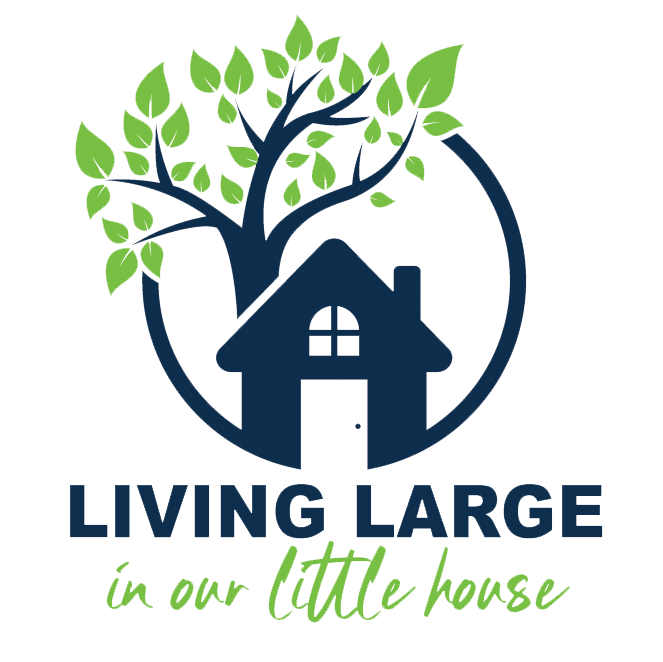Produce Dirty Dozen
The Environmental Working Group (EWG) released its 2014 list of The Dirty Dozen today.
What does this have to do with Living Large? For us, living as sustainable as possible goes hand in hand with our lifestyle.
We buy organic when we can. Sometimes, that isn’t possible, either due to availability or price. That’s when I refer to my Dirty Dozen list to see if we want the produce bad enough to risk the extra pesticide intake.
For example, I will never buy a head of lettuce or apples that are not organic, but I buy avocadoes that are conventionally grown, because they are part of the Clean 15.
“The EPA has not complied in full with the Congressional mandate, for more than a decade EWG has stepped in to fill the void by publishing its Shopper’s Guide to Pesticides in Produce. EWG aims to help people eat healthy and reduce their exposure to pesticides in produce.”
“EWG’s Shopper’s Guide helps people find conventional fruits and vegetables with low concentrations of pesticide residues,” said Sonya Lunder, EWG’s senior analyst and principle author of the report. “If a particular item is likely to be high in pesticides, people can go for organic.”
The guide ranks 48 popular fruits and vegetables based on an analysis of 32,000 samples tested by U.S. Department of Agriculture and the federal Food and Drug Administration.
In the latest report, 65 percent of the samples analyzed tested positive for pesticide residues.
For the fourth year in a row, apples topped the list of produce with the most pesticides. “Conventionally-grown apples have high concentrations of pesticides, primarily because of chemicals applied to the crop after harvest to preserve their appearance during long months of cold storage. EWG analysts reported last week that diphenylamine, or DPA for short, an antioxidant that prevents apple skin from discoloring during storage, was detected on more than 80 percent of raw apples in 2010, the most recent year they were tested. In 2012, DPA was banned for use on fruit grown in the European Union because of concerns it could form cancer-causing nitrosamines.”
Key findings:
- · The average potato had more pesticides by weight than any other food.
- · A single grape tested positive for 15 pesticides. Single samples of celery, cherry tomatoes, imported snap peas and strawberries tested positive for 13 different pesticides apiece.
- · Some 89 percent of pineapples, 82 percent of kiwi, 80 percent of papayas, 88 percent of mango and 61 percent of cantaloupe had no residues.
The 2014 Dirty Dozen:
- Apples
- Strawberries
- Grapes
- Celery
- Peaches
- Spinach
- Sweet bell peppers
- Imported nectarines
- Cucumbers
- Cherry tomatoes
- Potatoes
- Imported snap peas
In addition, leafy greens, such as collard greens and kale and hot peppers are typically contaminated with pesticides.
The Clean 15 (These were found to have no more than 4 residual pesticides):
- Avocadoes
- Corn (this takes into account pesticide only, not if they are GMO. If you want GMO free, you still need to buy organic.
- Pineapples
- Cabbage
- Frozen sweet peas
- Onions
- Asparagus
- Mangos
- Papaya
- Kiwi
- Eggplant
- Grapefruit
- Cantaloupe
- Cauliflower
- Sweet Potatoes
Do you pay attention to the Dirty Dozen/Clean 15 Lists when shopping?









Chemical pest control consists of using even more harmful synthetic pesticides. Chemical pest control is not eco-friendly and is never considered as an organic technique of control.
Mrs. Vaquera
Thanks for this, Kerri. I often dither about organic choices — and this post is quite helpful.
You’re very welcome, Ruth. We can’t keep all of the chemicals out, but we can just do the best we can.
This is such a valuable post. But it’s all so sad that this is what’s become of our produce: those that are tasty and safe and those that are tasty and contaminated. I just tweeted about it. Thanks.
Thanks for tweeting, Jeanine.
thanks for posting this information, Kerri.
I am glad to see that cauliflower is on the clean list — especially as I often use it place of potatoes, which, sad to see, are not.
I read that a lot of pesticides are used on potatoes to keep them from growing spuds.
Thanks for posting this, Kerri. It’s always a good reminder to do the best we can and try to avoid the most dangerous things in our diet.
You’re welcome, Sheryl. 🙂
So if you were to peel the apples or potatoes would they make the clean list?
Hi, Rhonda. Good question. According to the EWG, no. Here’s from their website: “The data used to create the Shopper’s Guide™ are from produce tested as it is typically eaten. This means washed and, when applicable, peeled. For example, bananas are peeled before testing, and blueberries and peaches are washed. Because all produce has been thoroughly cleaned before analysis, washing a fruit or vegetable would not change its ranking in the EWG’s Shopper’s Guide™. Remember, if you don’t wash conventional produce, the risk of ingesting pesticides is even greater than reflected by USDA test data.” http://www.ewg.org/foodnews/faq.php
Whatever is in/on the soil as things grow; will also be in/on whatever is growing. Washing/rinsing only helps the surface area, not the flesh and makeup of the plant.
I do the best I can too with my budget an options. It helps in the summer when I can crow things like lettuce / spinach, etc. at home … so I know pesticides weren’t used.
Oh, yes, Roxanne, growing at home is definitely the best option!
Yes, when I can. But I would rather fill my cart with fresh veggies and fruit that might come from the list than buy none if that is the only choice I have. My grocery store does not always carry these items as organic, so I do the best I can.
We have the same problem with availability, Brette. If there is a food I feel strongly about, like lettuce or potatoes, I will try to change the menu and make something that I can get. We just have to do the best we can. I think the first step is knowing what the ones are that should be bought organic.